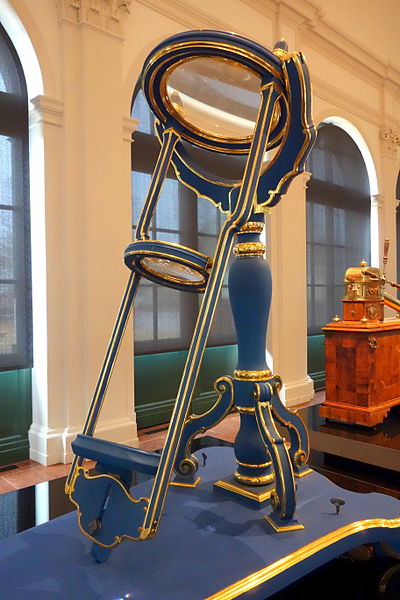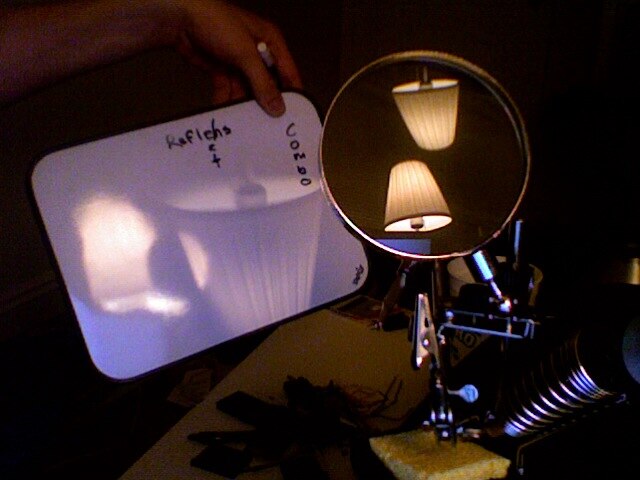A corrective lens is a transmissive optical device that is worn on the eye to improve visual perception. The most common use is to treat refractive errors: myopia, hypermetropia, astigmatism, and presbyopia. Glasses or "spectacles" are worn on the face a short distance in front of the eye. Contact lenses are worn directly on the surface of the eye. Intraocular lenses are surgically implanted most commonly after cataract removal but can be used for purely refractive purposes.
A pair of contact lenses, positioned with the concave side facing upward
Typical pair of single vision glasses
These bifocals are upside down as they rest on the surface. The add segment of the lens for near vision is the D-shaped area.
Prismatic color distortion shown with a camera set for nearsighted focus, and using -9.5 diopter eyeglasses to correct the camera's myopia.
A lens is a transmissive optical device that focuses or disperses a light beam by means of refraction. A simple lens consists of a single piece of transparent material, while a compound lens consists of several simple lenses (elements), usually arranged along a common axis. Lenses are made from materials such as glass or plastic and are ground, polished, or molded to the required shape. A lens can focus light to form an image, unlike a prism, which refracts light without focusing. Devices that similarly focus or disperse waves and radiation other than visible light are also called "lenses", such as microwave lenses, electron lenses, acoustic lenses, or explosive lenses.
A burning apparatus consisting of two biconvex lens
Light being refracted by a spherical glass container full of water. Roger Bacon, 13th century
Lens for LSST, a planned sky surveying telescope
Real image of a lamp is projected onto a screen (inverted). Reflections of the lamp from both surfaces of the biconvex lens are visible.








